The Holocaust Museum Berlin, a poignant reminder of history’s darkest chapters, is a must-visit for anyone in Berlin. This museum, also known as the Memorial to the Murdered Jews of Europe, honours the six million Jewish lives lost during the Holocaust. Its minimalist yet thought-provoking architecture and exhibits offer a powerful experience that compels visitors to reflect on the consequences of prejudice and hatred. Capturing photos at the Holocaust Museum Berlin can be a sensitive yet meaningful way to preserve the memory of your visit.
Holocaust Museum Berlin Location
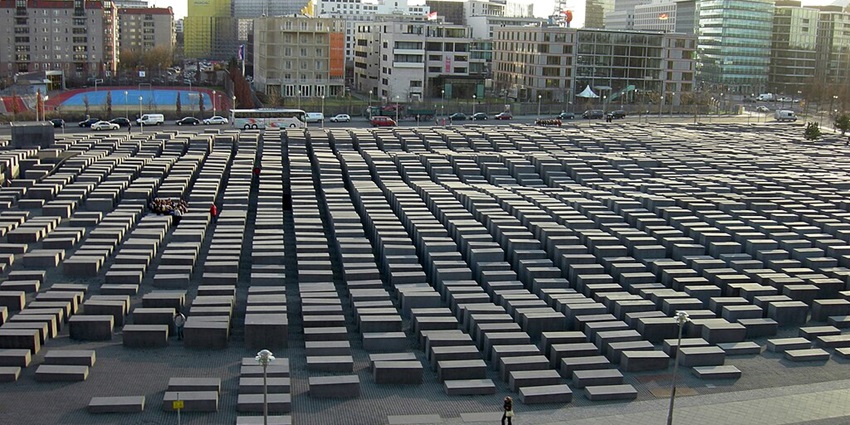
Photo: Txalapartari / Wikimedia Commons
The Holocaust Museum Berlin is situated at Cora-Berliner-Straße 1, 10117 Berlin, Germany, right in the heart of Berlin. This central location makes it easily accessible from other major landmarks, such as the Brandenburg Gate, which is just a short walk away. If you’ve been wondering where is the Holocaust Museum Berlin, you’ll find it nestled amidst Berlin’s bustling urban setting.
Suggested Read: Things To Do In Munich
How To Reach Holocaust Museum Berlin
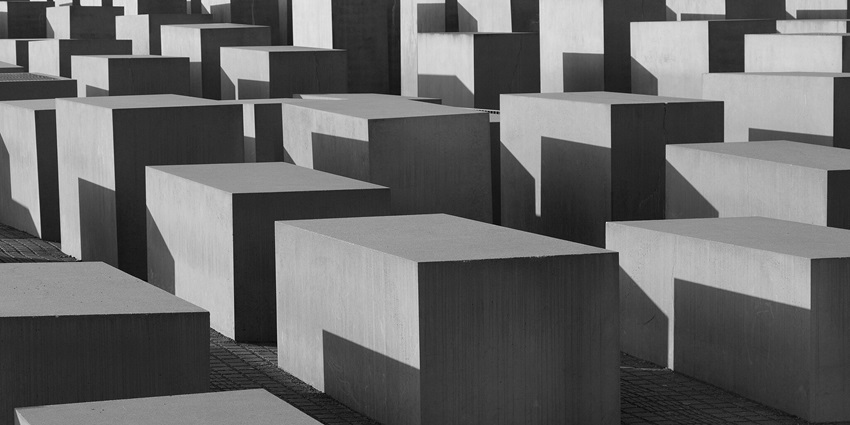
Photo: Tomascastelazo / Wikimedia Commons
By Air: Berlin Brandenburg Airport (BER) is the nearest airport, located approximately 25 km from the museum. From the airport, you can take an S-Bahn train or a taxi to the city centre.
By Bus: Berlin’s extensive bus network connects the museum to various parts of the city. Buses like the 100 and 200 stop close to the museum, making it a convenient choice for travellers.
By Rail: If you’re arriving by train, head to Berlin Hauptbahnhof (Central Station). From there, it’s just a 10-minute taxi ride or a quick ride on the U-Bahn. For those exploring public transport, understanding how to reach Holocaust Museum Berlin by rail is essential for seamless travel.
Places To Visit In And Around Holocaust Museum Berlin
Exploring the Holocaust Museum Berlin is just the beginning! Berlin offers several must-visit destinations nearby.
1. Brandenburg Gate
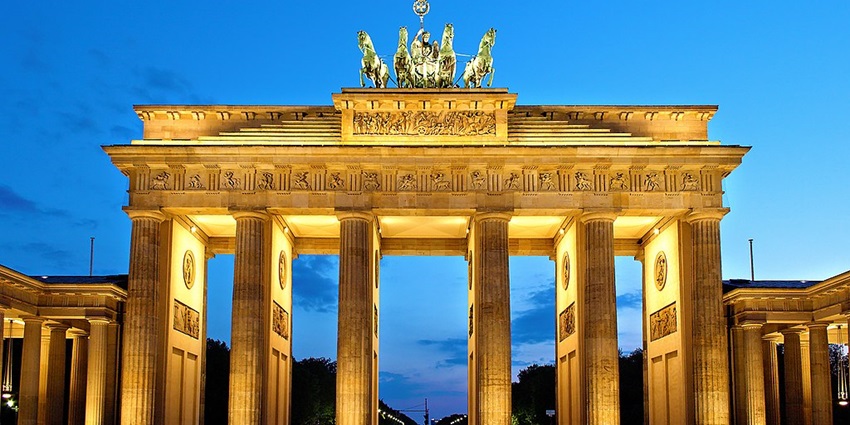
Photo: Thomas Wolf / Wikimedia Commons
Located just 500 metres from the Holocaust Museum Berlin, the Brandenburg Gate symbolises Germany’s history and resilience. Built in the late 18th century, this neoclassical monument once marked the divide between East and West Berlin. Today, it represents unity and peace, attracting millions of visitors annually. The gate is beautifully illuminated at night, making it a photographer’s favourite spot. Surrounded by cafes and shops, it’s also a great place to relax after exploring. Don’t miss capturing stunning photos at Holocaust Museum Berlin with the gate in the backdrop.
Timings: 24*7
Entry Fee: Free
Suggested Read: Things To Do In Hamburg
2. Topography Of Terror
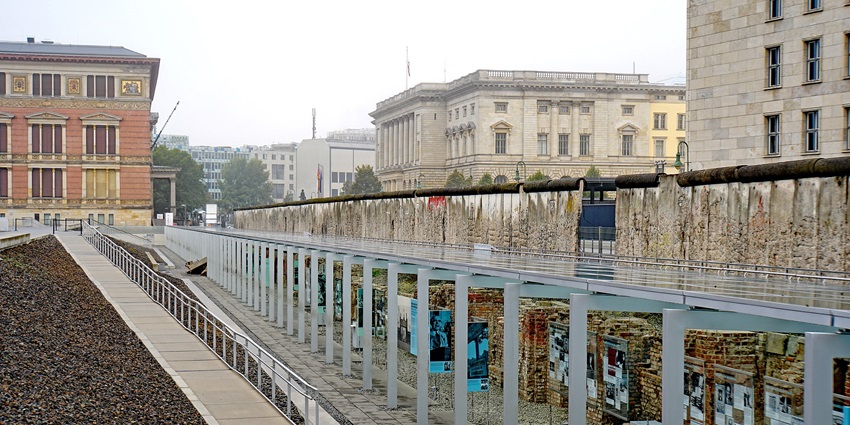
Photo: Dennis G. Jarvis / Wikimedia Commons
Situated near the Holocaust Museum Berlin, this open-air museum is built on the former headquarters of the Gestapo and SS. It provides a chilling yet educational insight into Nazi rule through well-documented exhibits and photographs. Visitors can walk along the preserved Berlin Wall sections and reflect on the harrowing events of the era. The museum also features guided tours and temporary exhibitions for a deeper understanding. It’s a sombre but essential stop for those seeking to understand Berlin’s tumultuous past. Be sure to add this to your list when exploring the Holocaust Museum Berlin and its surroundings.
Timings: 10 AM – 8 PM
Entry Fee: Free
3. Reichstag Building
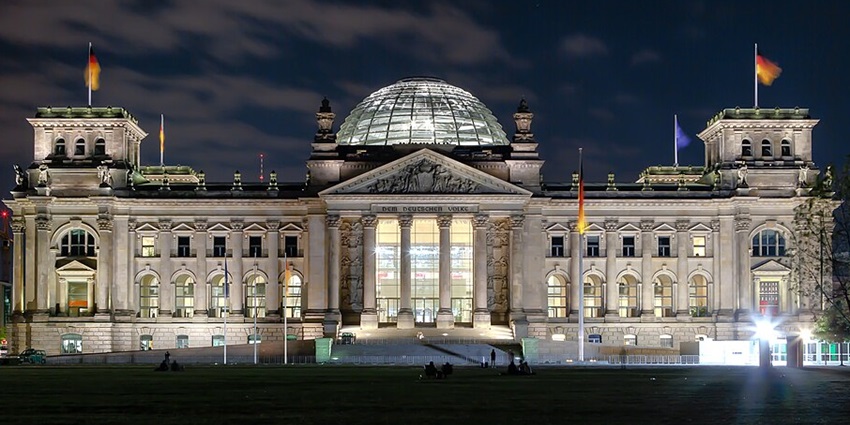
Photo: Avda / Wikimedia Commons
A short walk from the Holocaust Museum Berlin, the Reichstag Building is a masterpiece of history and architecture. Famous for its modern glass dome designed by Sir Norman Foster, the structure offers panoramic views of Berlin. The dome represents Germany’s commitment to transparency and democracy, drawing visitors from around the globe. Free guided tours are available to learn about the building’s role in German politics. Don’t forget to pre-register online for entry. Capturing photos of the Holocaust Museum Berlin and the Reichstag together creates a visual juxtaposition of history and modernity.
Timings: 8 AM – Midnight
Entry Fee: Free
Suggested Read: Theme Parks In Germany For Non-Stop Jaw-Dropping Adventure
4. Checkpoint Charlie
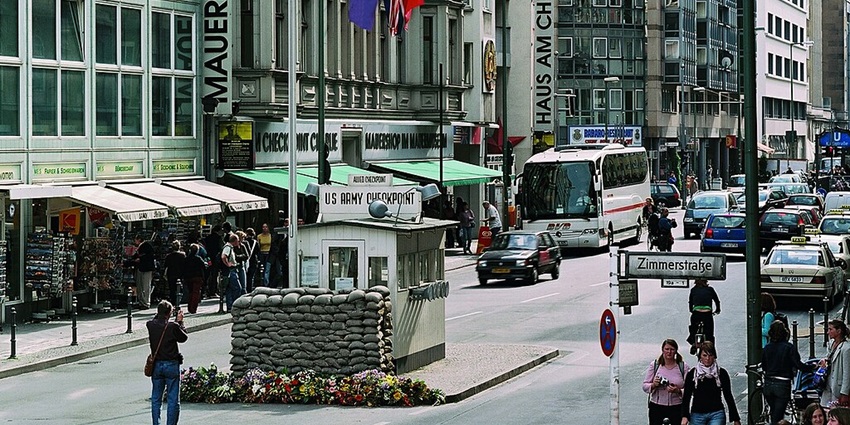
Photo: Eintracht123 / Wikimedia Commons
Checkpoint Charlie, one of the most famous Cold War sites, is a must-visit near the Holocaust Museum Berlin. This former border crossing between East and West Berlin is now a museum and historical marker, offering exhibits on espionage and escape attempts during the Berlin Wall era. The replica guardhouse and soldier figurines make for iconic photos. Explore the nearby Wall Museum for a deeper understanding of the division and reunification of Berlin. Visiting Checkpoint Charlie complements your experience at the Holocaust Museum Berlin, enriching your understanding of Germany’s layered history.
Timings: 24*7
Entry Fee: Free
5. Jewish Museum Berlin
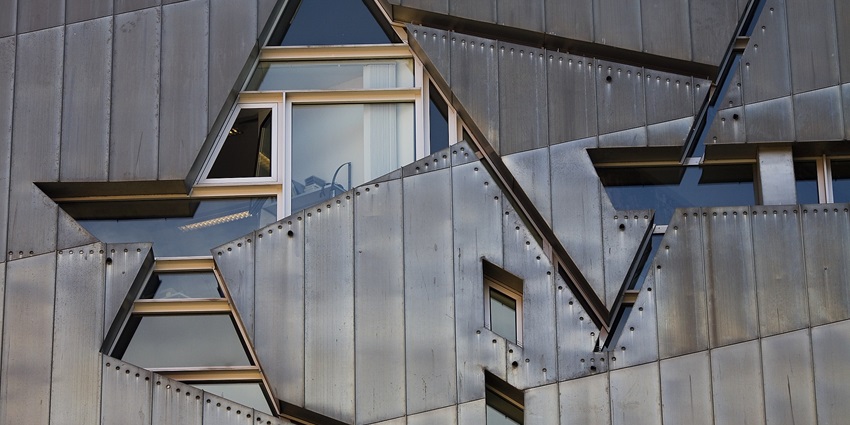
Photo: Jorge Royan / Wikimedia Commons
The Jewish Museum Berlin, located a few kilometres from the Holocaust Museum Berlin, is one of Europe’s most important museums. It chronicles the rich and complex history of Jewish life in Germany through artefacts, art, and interactive exhibits. The building’s unique zigzag architecture by Daniel Libeskind is an attraction, symbolising the ruptures in Jewish history. Key highlights include the Holocaust Tower and the Garden of Exile, which evoke deep emotional responses. Visiting this museum alongside the Holocaust Museum Berlin provides a comprehensive understanding of Jewish history and culture in Germany.
Timings: 10 AM – 7 PM
Suggested Read: Places To Visit In Germany
Where To Stay Near Holocaust Museum Berlin
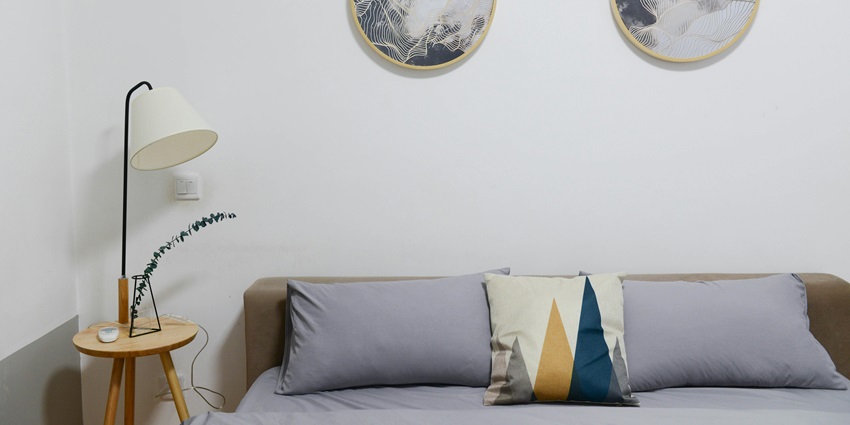
Photo: Cats Coming / Pexels / Image For Representation Only
Berlin offers a range of accommodations for every budget. The Hotel Adlon Kempinski near Brandenburg Gate offers world-class amenities for a luxurious stay. Budget travellers can opt for hostels like Generator Berlin Mitte. Staying close to the museum provides ample time to explore its surroundings.
Where To Eat Near Holocaust Museum Berlin
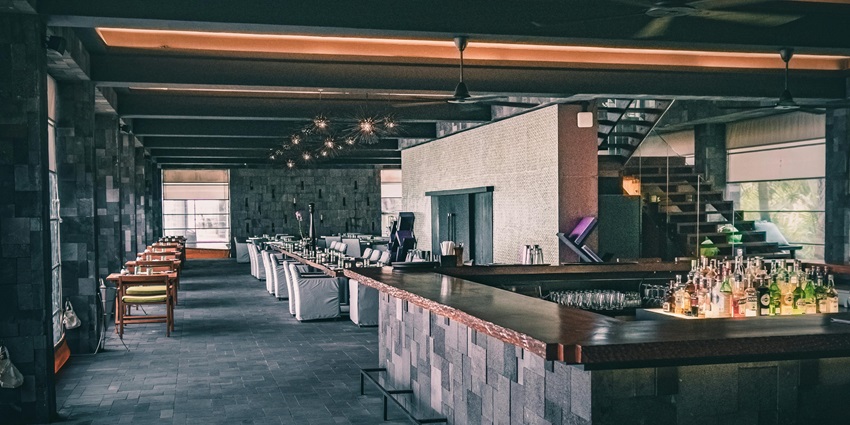
Photo: wewe yang / Pexels / Image For Representation Only
When exploring where to eat near Holocaust Museum Berlin, you’ll find many options. Café LebensArt offers traditional German cuisine with a modern twist, while Vapiano serves delicious Italian fare in a relaxed setting. Head to Currywurst Berlin for quick bites to taste the iconic street food.
Suggested Read: Places To Visit In Hamburg For History, Culture & Waterfront Views
Best Time To Visit Holocaust Museum Berlin
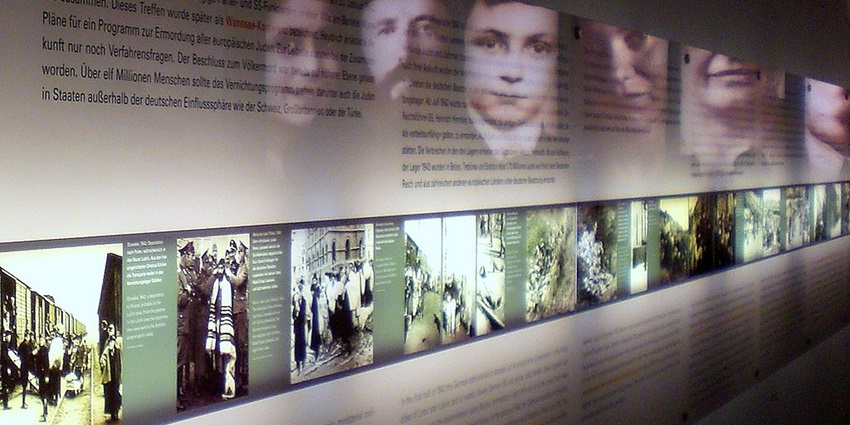
Photo: Joel Zimmer / Wikimedia Commons / Image For Representation Only
The best time to visit Holocaust Museum Berlin is during spring (April to June) or autumn (September to November) when the weather is pleasant and the crowds are smaller. Early mornings or late afternoons are ideal for a quieter experience and better lighting for photography.
Other Factors To Consider
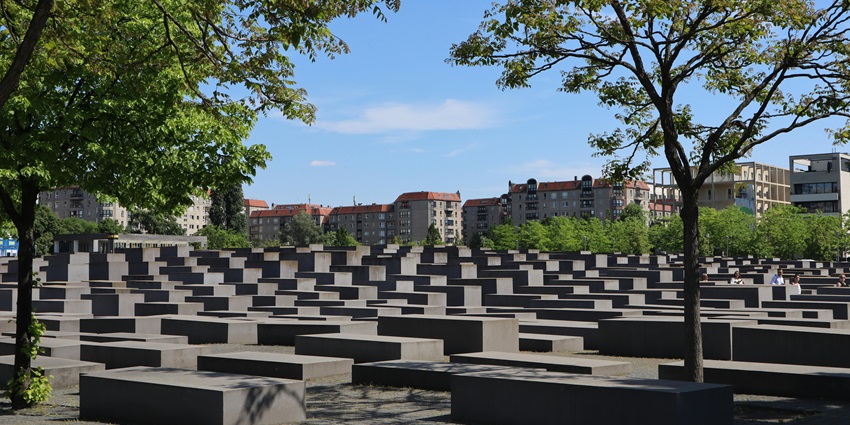
Photo: Travel Photographer / Pexels
Average Cost Of The Trip
The trip cost to the Holocaust Museum Berlin varies depending on travel and accommodation choices. On average, a 3-day trip to Berlin costs around €500–€700 (₹45,254.64 – ₹63,356.49), covering flights, accommodation, meals, and local transport.
Tips For Travellers
- Check the Holocaust Museum Berlin timings before visiting to plan your day effectively.
- Entry to the outdoor memorial is free, but consider taking a guided tour for deeper insights.
- Photography is allowed, but always be respectful when capturing photos at Holocaust Museum Berlin.
- Wear comfortable shoes as the museum requires a significant amount of walking.
- Book tickets for nearby attractions like the Reichstag in advance to avoid long queues.
Suggested Read: Places To Visit In Berlin
The Holocaust Museum Berlin is a profound destination that honours the memory of millions while educating visitors about history’s darkest chapters. Its immersive exhibits, serene architecture, and surrounding landmarks make it a must-visit in Berlin. Whether exploring its intricate design or reflecting on its lessons, the experience is unforgettable. Book your journey to the Holocaust Museum Berlin with TripXL for a seamless and enriching travel experience.
Cover Photo: Rodrigo Galindez / Wikimedia Commons


 WhatsApp
WhatsApp
 Twitter
Twitter









